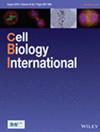Dysregulation of Calcium Homeostasis: An Important Factor Leading to Ferroptosis in Cardiovascular Diseases
Abstract
Cardiovascular disease is a circulatory system disease involving the heart and blood vessels, which is one of the main causes of human health loss and even life-threatening. Ca2+ is an important signal molecule. Free calcium ions in the cytoplasm are involved in various physiological and biochemical reactions of cells. Ferroptosis is a programmed cell death driven by lipid peroxidation dependent on free ferrous ions. The essence of ferroptosis is the accumulation of lipid peroxide caused by the increase of intracellular ferrous ion content, which leads to the damage of the phospholipid membrane and eventually cell death. Studies have shown that calcium homeostasis and ferroptosis are involved in the occurrence and development of cardiovascular diseases, but the relationship between them remains to be clarified. This article reviews the various pathways regulating calcium homeostasis in cells and the occurrence and development mechanism of ferroptosis, and discusses the relationship between the two in cardiovascular diseases, which is expected to provide novel and important strategies for alleviating and treating cardiovascular diseases.

 求助内容:
求助内容: 应助结果提醒方式:
应助结果提醒方式:


